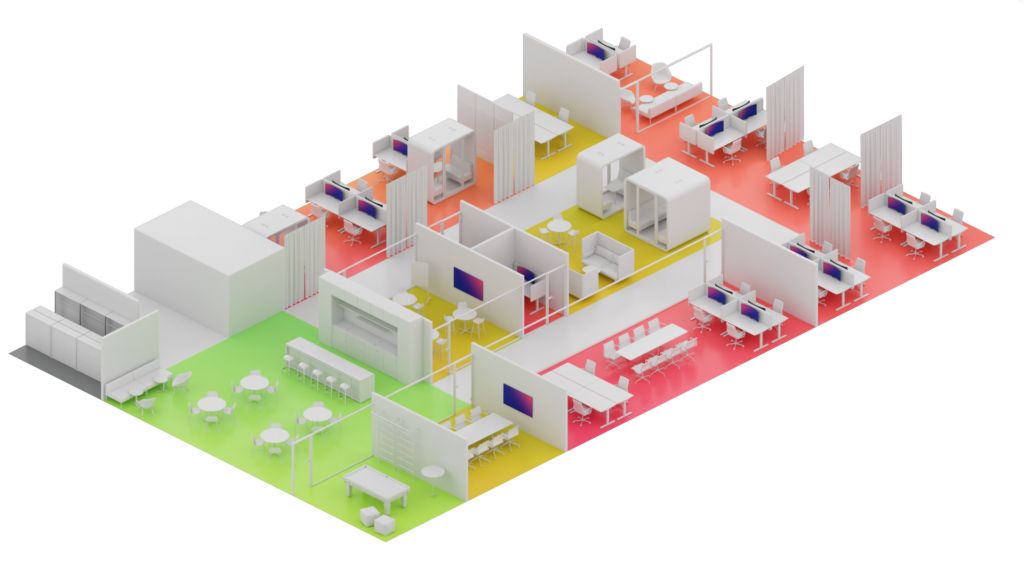In a hybrid working environment, versatility is key. What to consider when designing a hybrid workspace?
A fundamental element of a varied working environment is the division and grouping of different activities based on the nature and duration of the task or encounter. It is often helpful to think of the working environment in different zones. At the heart of everything is the ‘city center’ meeting zone, where you can spend time informally with colleagues. The space is designed to be flexible to adapt for work, leisure and events.
The general question is why anyone would want to come to the office when it is so easy to work from home. The answer is usually: for the sense of community.

When launching a workplace transformation project, consider at least the following:
- Have the needs of staff been identified concerning future working patterns?
- How many people work in the office daily? How many participate remotely?
- What motivates your employees to come to the office? Do the current facilities meet the changing needs and expectations?
- Is there an existing smart office solution with sensors at the premises, and how could it be extended to serve hybrid work?
- Has the furniture’s adaptability been considered in the electrical design of the space and the AV and smart office solutions?
- How have different work needs been considered, e.g. are there quiet spaces for focus work, or do you need more space for project work?
- Etc.
NOT ALL WORK IS HYBRID
Hybrid work is, above all, a change in attitudes, working methods and ways of cooperating. Space solutions can support hybrid working by making spaces as flexible, versatile, and easy to use as possible. Work requiring concentration can be carried out in dedicated areas, where hybrid working is not an option.

Zonal thinking achieves more efficient use of space when versatile spaces are shared and adaptable. Employees can choose where they see fit to work at any given time. Is it at the home office today or physically meeting colleagues in the office? Freedom of choice increases employee satisfaction and happiness.
THINGS TO CONSIDER IN THE DESIGN
The design of spaces must take into account the need for constant adaptability. The number of participants varies, and the way of working together ranges from a typical digital whiteboard to a collaborative platform.
Take these things into account when designing hybrid working environments:
- Zones and common rules
- Zoning and rules of the office soundscape: in which areas it is OK to conduct Zoom calls from your desk and in which areas it is preferable to use separate retreats for meetings.
- Guidelines for video meetings
- Ensure video availability and give clear recommendations and guidelines, eg. to keep the video link open during the cooperation
- Digital platform for asynchronous work
- Choose the collaboration platform that works best: where everyone has equal access and can edit the work in hand.
- Lighting and acoustics
- Consider lighting and acoustics in meeting and project rooms to ensure the best possible experience.
- Technology that works
- Ensure the availability of new technology and the availability of a working network connection and electricity at all times.
- Flexible and versatile spaces
- Create spaces that can be used for a variety of purposes and are flexible to changes over time to ensure better occupancy.
What is an agile hybrid office and what kind of spaces does it consist of? Read more on our blog.
Does your workplace support the hybrid ways of working or do you need help? We are happy to guide you. Get in touch and let's talk more!


